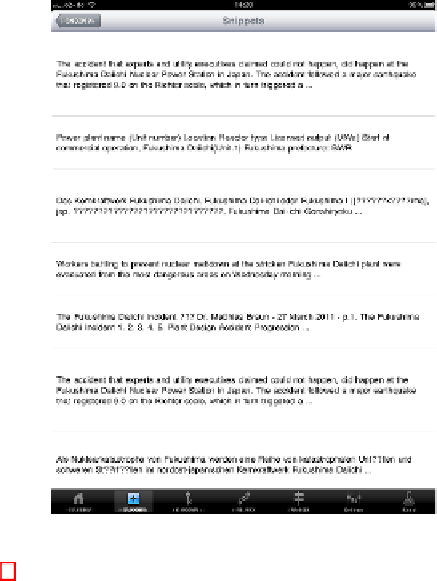Information Technology Reference
In-Depth Information
Fig. 3.
The snippets that are associated with the node label “fukushima dai-ichi” of the topic
graph from Fig. 2. A single touch on this snippet triggers a call to the iPad web browser in order
to display the corresponding web page. In order to go back to the topic graph, the user simply
touches the button labeled iGNSSMM on the left upper corner of the iPad screen.
3.2
Text-based User Interface on the iPhone
The next screenshots (Fig. 4 and 5) show the results of the same query displayed on the
iPhone.
Fig. 4 shows the alternative representation of the topic graph displayed in Fig. 1. By
single touching an item in the list the next page with associated topics to this item is
shown. Finally, Fig. 5 presents the snippets after touching the item “fukushima daiichi”.
Touching one snippet will lead to the corresponding web page.
4
Semantic-Driven Filtering of Extracted Topics
The motivation for using the chunk-pair-distance statistics as described in section 2 is
the assumption that the strength of hidden relationships between chunks can be cov-
ered by means of their collocation degree and the frequency of their relative positions
in sentences extracted from web snippets, and as such, are emphasizing syntactic rela-
tionships. In general, chunking crucially depends on the quality of the embedded PoS
tagger. However, it is known that PoS tagging performance of even the best taggers
decreases substantially when applied on web pages [7]. Web snippets are even harder
to process because they are not necessarily contiguous pieces of texts. For example, an






